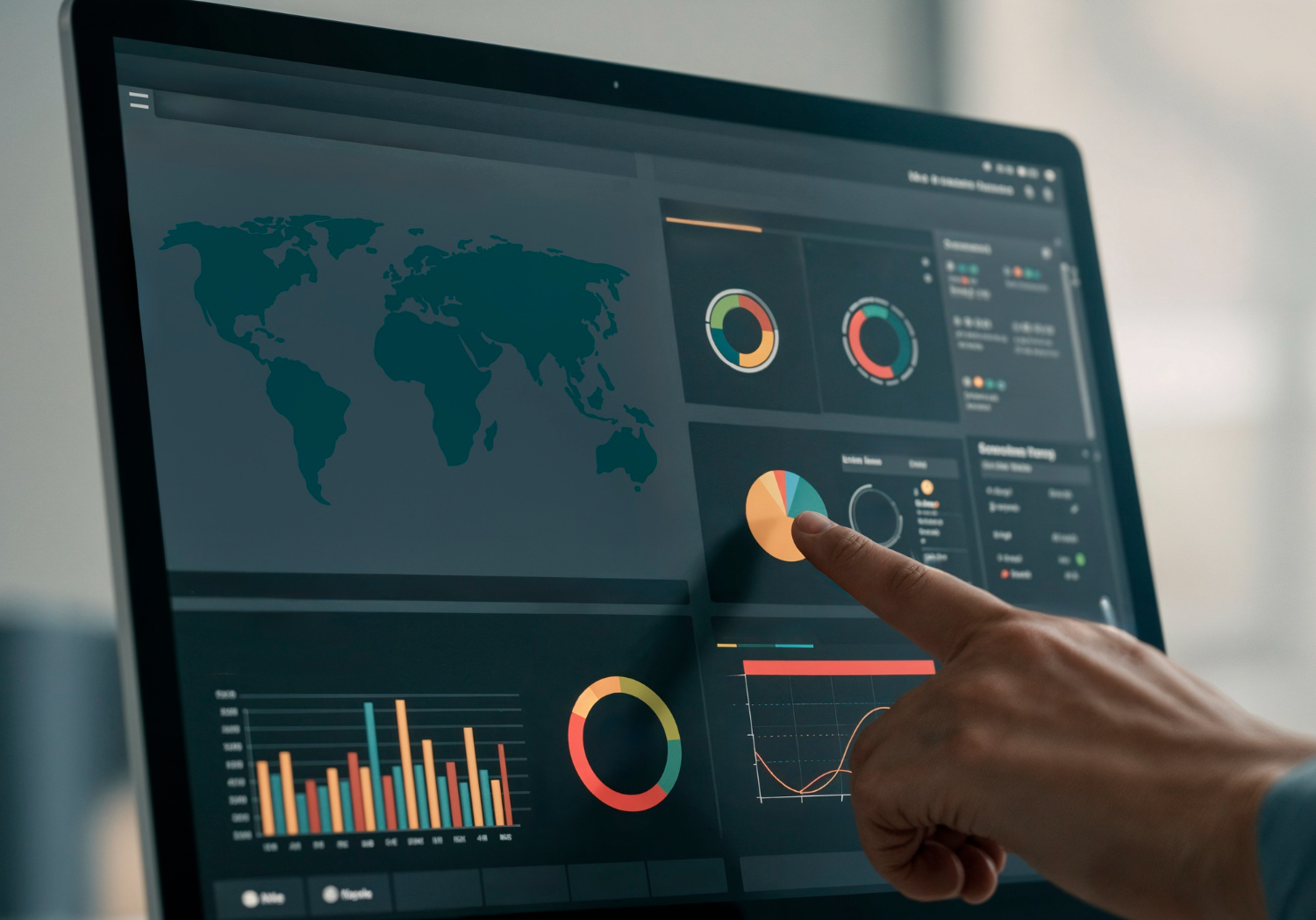Predictive Analytics in 2025
September 24, 2025
10 min. reading time
How Augmented Analytics Is Driving Business Intelligence Forward
In the data-saturated world of modern business, knowing what happened is no longer enough. Business intelligence (BI) is evolving beyond rearview dashboards, toward predictive analytics, which empowers companies to anticipate trends, reduce risk, and act with confidence. With the rise of augmented analytics, these predictive capabilities are now more accessible, actionable, and embedded in workflows than ever before.
From forecasting sales and customer churn to optimizing operations and inventory, predictive analytics enables businesses to look beyond dashboards and toward the future. At Kloud9, we view this not as a BI add-on, but as a critical layer in a modern augmented analytics stack.
This article explores how predictive analytics works, why it matters, and how to use it as a strategic lever in your enterprise business intelligence (BI) architecture.
What Is Predictive Analytics?
Predictive analytics uses historical data, statistical modeling, and machine learning to forecast future outcomes. Instead of just showing what has already happened, predictive models analyze trends and patterns to estimate what’s likely to happen next.
Modern predictive models often leverage:
- Historical datasets (e.g., customer transactions, website activity)
- Behavioral signals (e.g., engagement, buying patterns)
- External variables (e.g., economic indicators, seasonality)
- Machine learning algorithms (e.g., decision trees, time series forecasting, regression)
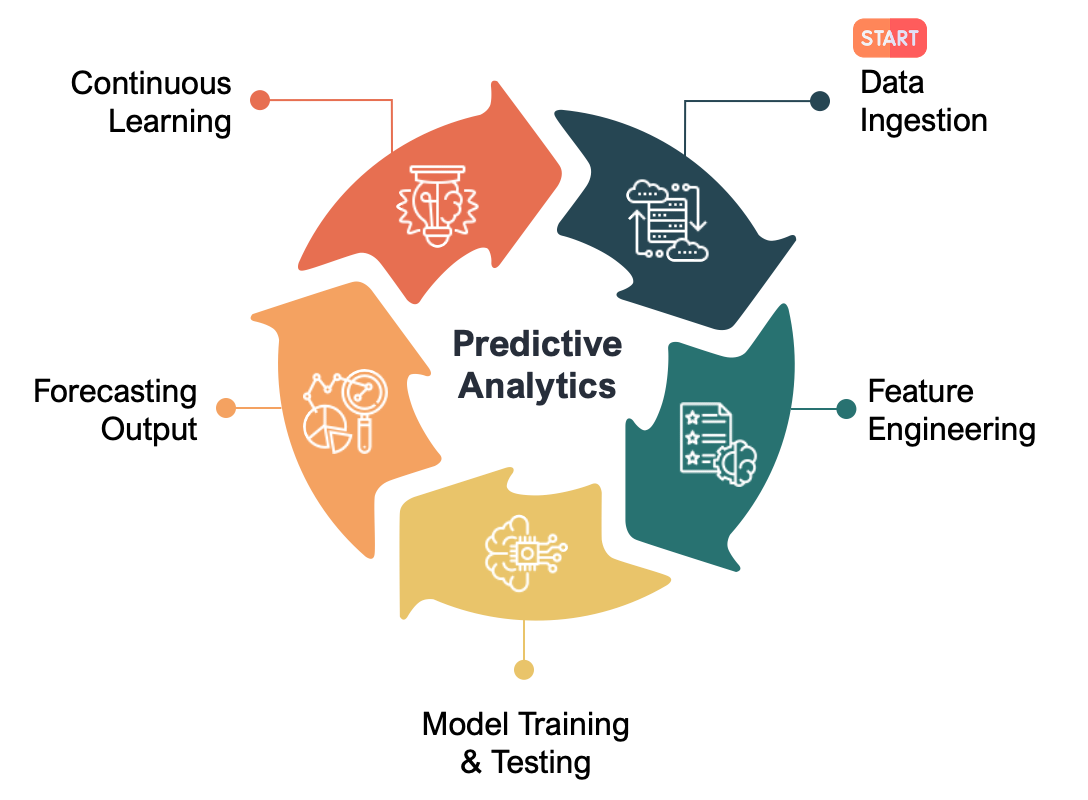
Fig. Predictive Analytics Workflow
These components come together to answer questions like:
- Which customers are most likely to churn next quarter?
- What is our sales forecast by region for Q4?
- How much inventory should we stock based on past demand?
- Which marketing leads are most likely to convert?
According to Gartner, organizations using predictive analytics outperform peers by 20% in decision-making efficiency and business outcomes.
From BI to Foresight: The Evolution of Analytics
Traditional business intelligence tools have long helped companies track performance. But most are backward-looking and relying on historical KPIs and static dashboards.
That’s changing.
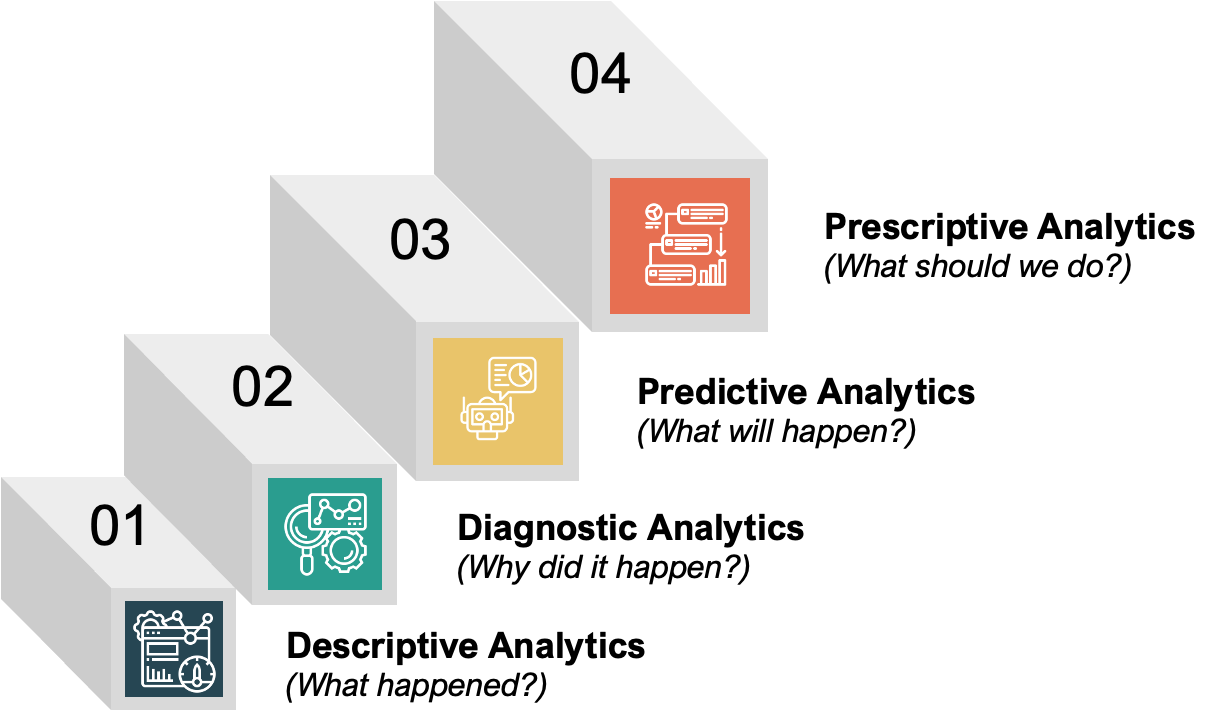
Fig. From BI to Predictive Foresite Evolution Timeline
With the rise of augmented analytics, businesses can now go from descriptive to prescriptive insight. Predictive analytics is a key pillar in this evolution, powered by:
- AI-driven automation for faster model training
- Natural Language Querying (NLQ) so business users can ask questions like “What will revenue look like next month?”
- Embedded ML in tools like Tableau, Power BI, and ThoughtSpot
- Real-time data integration via cloud data platforms and Unified Data Platforms (UDPs)
This means more teams, not just data scientists, can explore, simulate, and act on predictive insights without writing a single line of code.
Business Use Cases for Predictive Analytics
Predictive analytics is versatile. It applies across industries and functions. Here’s how forward-thinking organizations are using it:
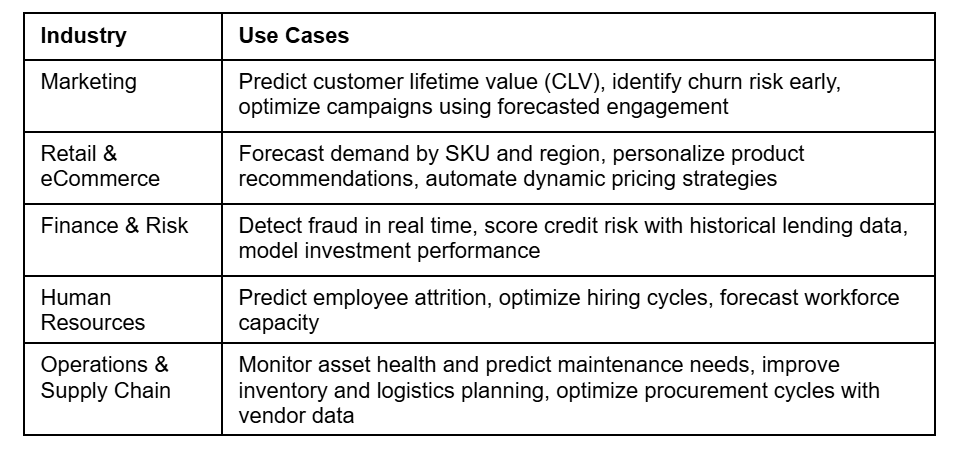
How Predictive Analytics Works: Behind the Scenes
While the concept is simple, use the past to predict the future, the execution relies on layered capabilities:
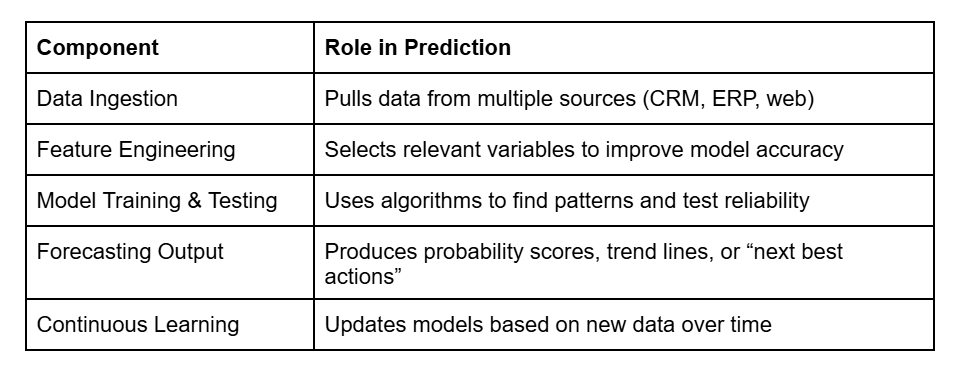
At Kloud9, we help enterprises build this engine using both off-the-shelf tools and custom pipelines integrated into a broader Unified Data Platform.
Augmented Analytics: Predictive for the Masses
The real revolution is not just in advanced models, but in making them usable.
That is where augmented analytics shines. These platforms automate model building, surface hidden patterns, and guide users with plain-language explanations.
Key capabilities include:
- AutoML: Automated model selection and tuning
- What-if analysis: Simulate different scenarios and business conditions
- Anomaly detection: Surface issues before they impact KPIs
- Forecast visuals: Show predicted trends alongside historical data
Challenges in Predictive Analytics (and How to Solve Them)
Despite the promise, organizations often struggle with implementation. Key hurdles include:
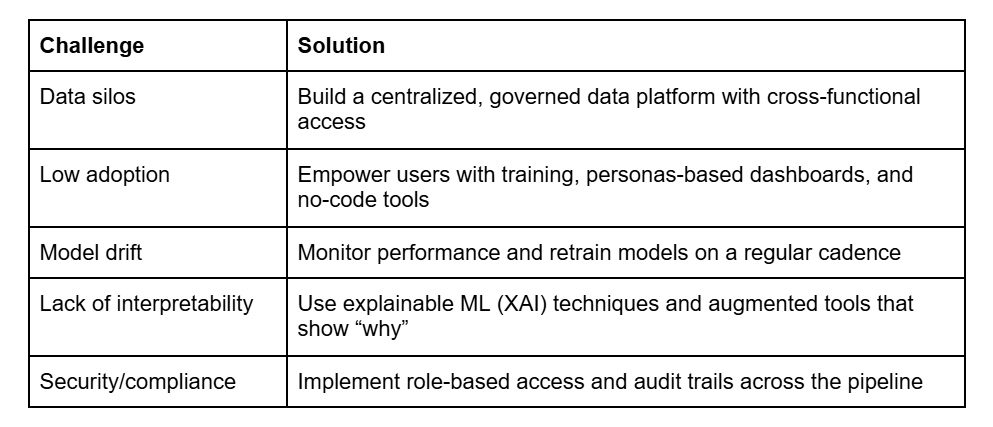
Building a Predictive-First Culture
Predictive analytics isn’t just a toolset, it’s a mindset. This mindset means embracing prediction as a core part of how decisions are made.
To fully benefit, organizations need to align across three key dimensions:
- Technology: Invest in platforms that support ML pipelines, real-time processing, and automated insight delivery.
- People: Upskill teams in data literacy, especially business users who will consume insights.
- Process: Embed predictions into workflows; CRM actions, marketing triggers, operational alerts.
Real-World Example: Predictive Analytics at Global Scale
One of Kloud9’s clients, a leading global shingle manufacturer, faced significant challenges in scaling operations and enabling real-time insights across a complex, multi-region supply chain.
The Challenge:
The manufacturer was managing fragmented data across logistics, production, forecasting, and demand planning systems. Delays in accessing reliable data made it difficult to anticipate production needs, respond to shifts in customer demand, or optimize resource allocation. Legacy infrastructure and siloed systems hindered both operational agility and strategic planning.
The Solution:
Kloud9 implemented a cloud-native, centralized data platform on AWS to unify their data ecosystem and enable predictive insight. Our team:
- Built 100+ robust data pipelines to harmonize inputs across logistics, production, and planning
- Enabled real-time data access by reducing query time from 2 days to near-instant retrieval
- Standardized data governance with role-based access and enterprise-wide compliance policies
- Positioned the platform for AI and ML integration, enabling advanced demand forecasting and predictive analytics
The Outcome:
With a modernized data architecture, the client transitioned from reactive operations to proactive, prediction-led decision-making. Business units now use intuitive dashboards to anticipate demand spikes, optimize production schedules, and adjust inventory planning based on machine learning-powered forecasts.
Predictive Analytics in 2025: What’s Next?
Looking ahead, we see predictive analytics evolving with:
- Agentic AI systems that not only forecast but act on predictions
- Federated learning for secure model training across regions
- Multimodal inputs, combining sensor, video, and language data
- Causal inference models that explain not just what might happen, but why
As businesses modernize their data platforms, predictive becomes more real-time, more accessible, and more embedded in everyday decisions.
Insight Is Power, Foresight Is Advantage
In an era of constant change, businesses that can anticipate and act faster will lead. Predictive analytics transforms business intelligence from a mirror to a crystal ball, revealing the road ahead.
At Kloud9, we help enterprises build data strategies that go beyond dashboards, into proactive, predictive systems that shape the future.
Ready to turn insight into foresight?
Contact Kloud9 to build a predictive-first enterprise with augmented analytics, unified data platforms, and real-time intelligence that moves your business forward.



